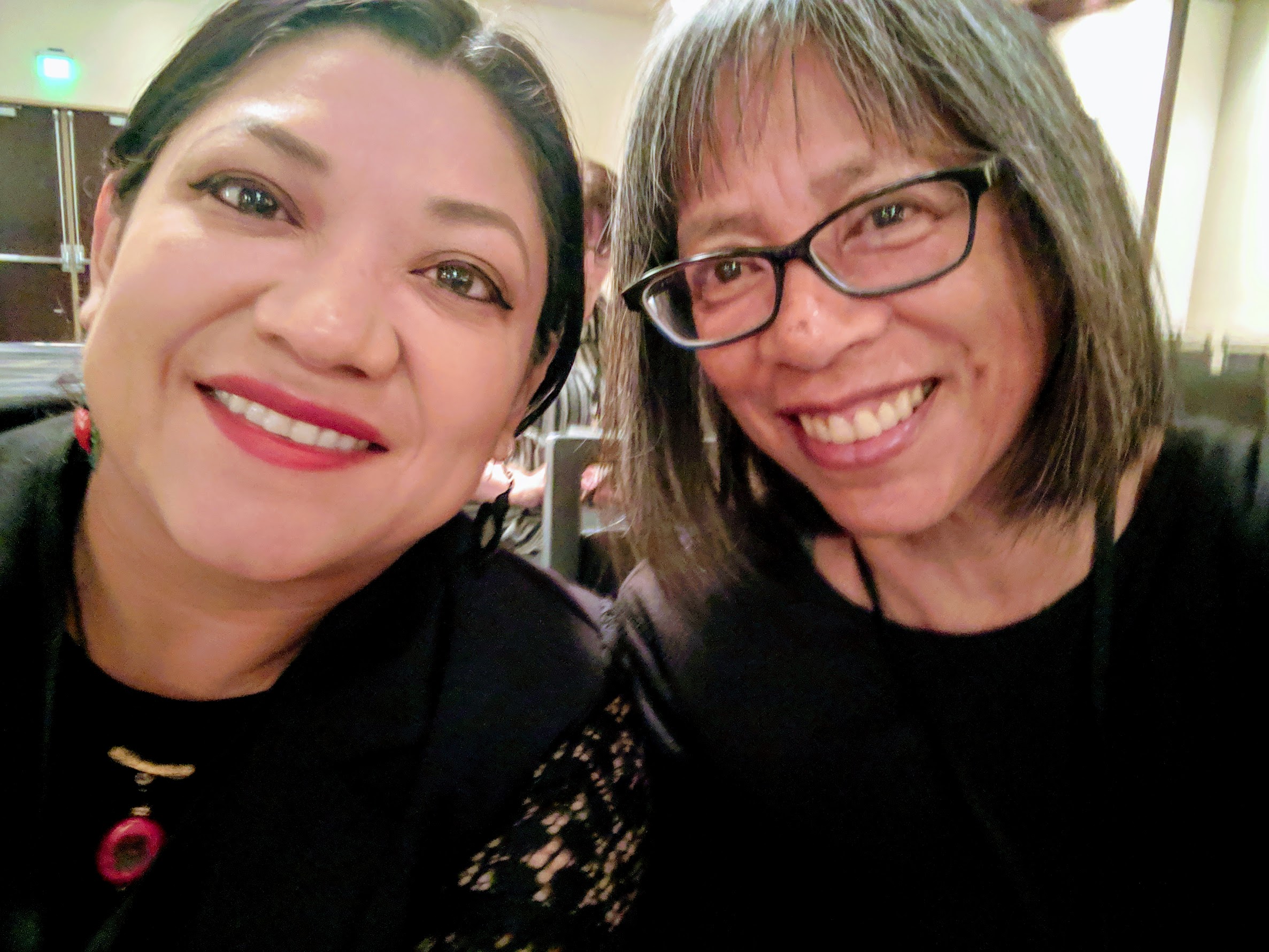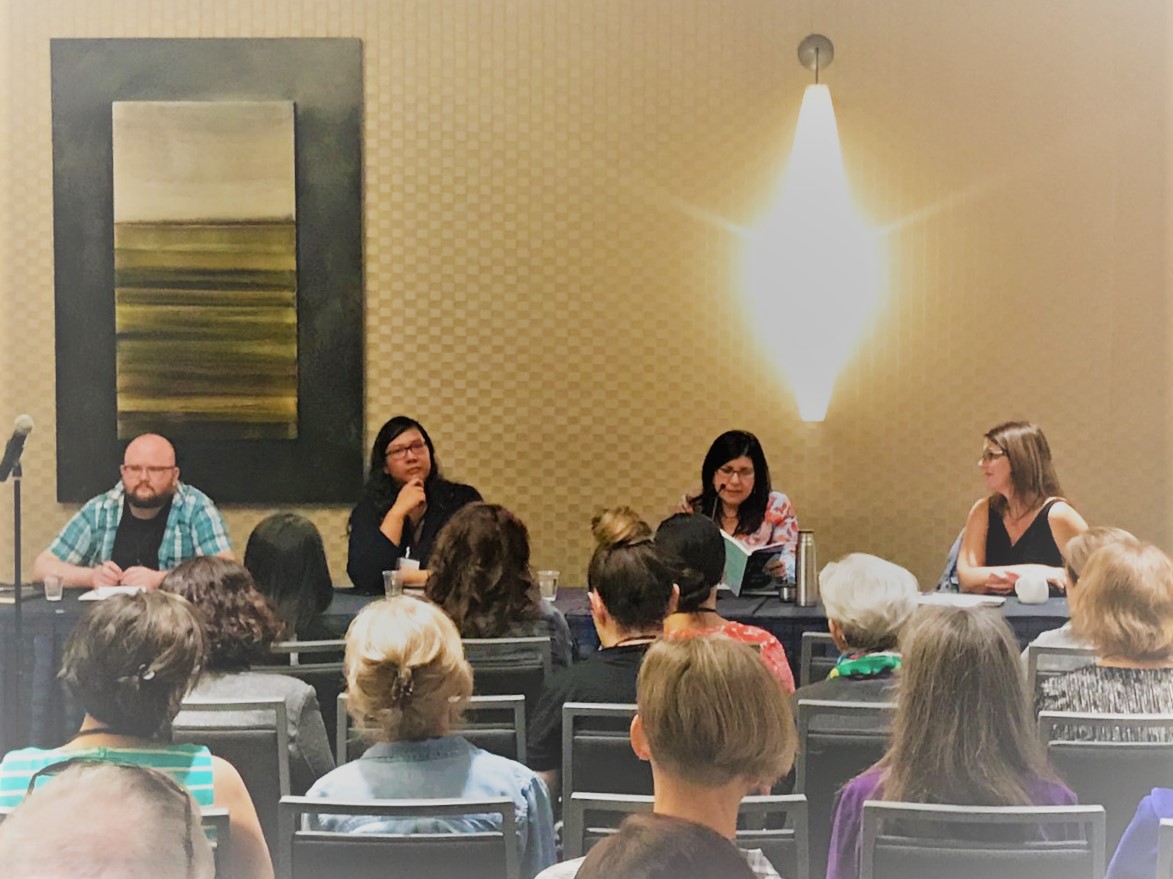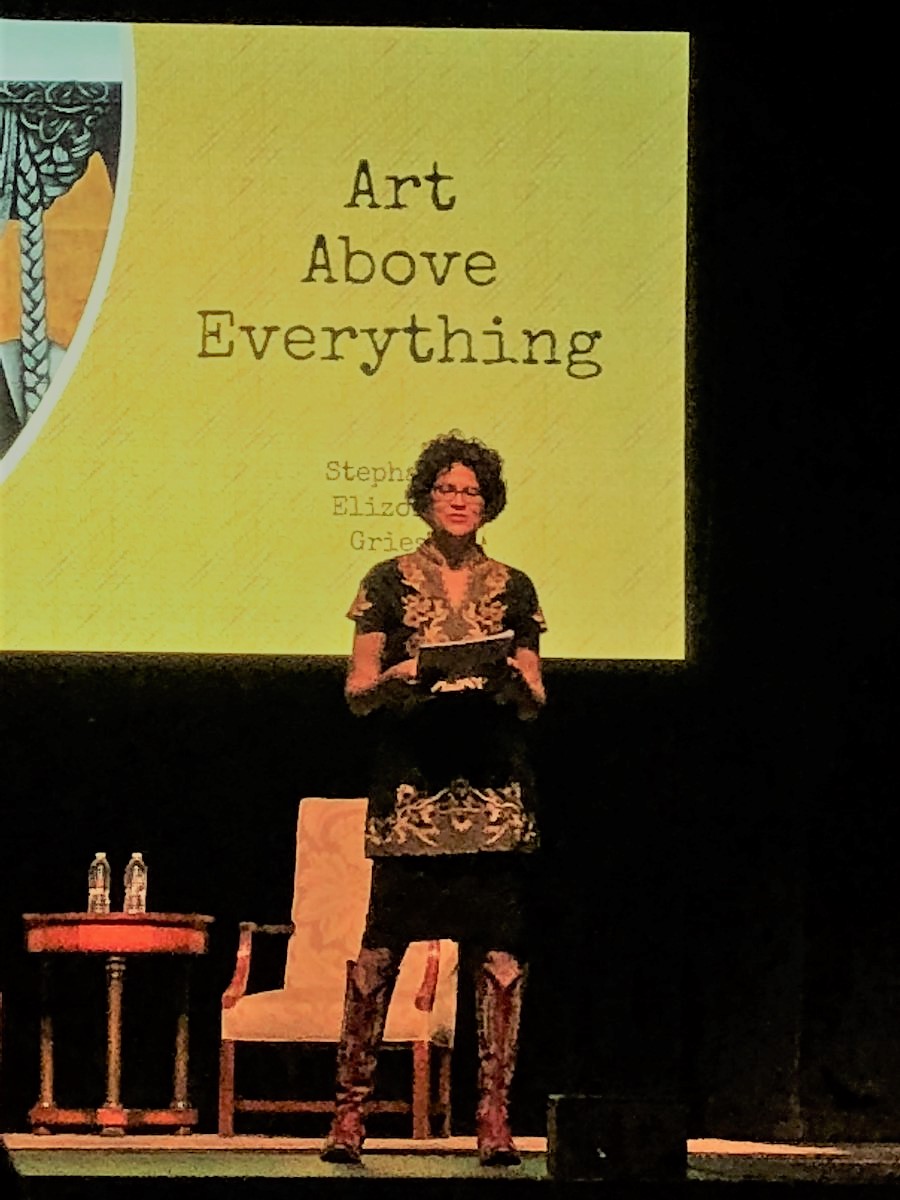Art and Nonfiction and Books I Want to Read: Finding Inspiration at the NonfictioNOW Conference

“We are essayists. We can make a difference,” Stephanie Elizondo Griest said in her electrifying keynote talk that capped the three-day NonfictioNOW Conference in Phoenix recently. I’m a fiction writer. But I went – an interloper, a mole – to glean what I could about writing essays. Not to forsake fiction. I’ll always wants to imagine people into existence, throw wrenches into their lives, yank the net out from under them.
But sometimes I find myself wanting to write about real people and real wrenches and  real yanked-away nets. Which is why last summer I took a flash non-fiction workshop from the splendid Suzanne Paola, and why when the ad for this conference. featuring the likes of Francisco Cantú, Gretel Ehrlich, and Stephanie Elizondo Griest, popped up on my Facebook feed, I didn’t hesitate to register. Anyway, leaving Seattle for Phoenix in early November seemed like a pretty good proposition.
real yanked-away nets. Which is why last summer I took a flash non-fiction workshop from the splendid Suzanne Paola, and why when the ad for this conference. featuring the likes of Francisco Cantú, Gretel Ehrlich, and Stephanie Elizondo Griest, popped up on my Facebook feed, I didn’t hesitate to register. Anyway, leaving Seattle for Phoenix in early November seemed like a pretty good proposition.
NonfictioNOW turned out to be a very fine conference. First, it’s extremely navigable in terms of size. Each session consisted of six topics – a manageable menu from which to choose. The four hundred participants could easily scatter among the various panels, and somehow there seemed to be a more or less even distribution of bodies, as if some law of conference physics was in play.
Second, the chances of meeting a writer you admire are rather high. On the first morning of the conference, I found myself on the opposite side of a little two-person table from Reyna Grande. I ran into the very smart Paisley Rekdal in the hotel gym and a day later at the hotel bar. While waiting for a panel to begin, the man next to me offered his hand and said, “I’m Dinty.” Of course, I already knew he was Dinty Moore.
of the conference, I found myself on the opposite side of a little two-person table from Reyna Grande. I ran into the very smart Paisley Rekdal in the hotel gym and a day later at the hotel bar. While waiting for a panel to begin, the man next to me offered his hand and said, “I’m Dinty.” Of course, I already knew he was Dinty Moore.
Third, nearly every panel I attended was well-organized, with engaging content and speakers who delivered both interesting prepared remarks and thoughtful responses to audience questions. The panels were a way for me to find authors whose books I want to read. Here are some of them:
Sarah Viren moderated the kick-off session called On Collections. Before she invited the multi-genre panelists to describe their prose or poetry collection, she offered a metaphor for the collection – the dinner party her grandmother used to organize where she sat her guests male/female/male/female, never seating couples or spouses side by side because she wanted the unexpected to happen. Viren’s introduction, an essay itself, was charming and graceful. Her collection is called Mine and explores the theme of (what else) ownership. It won the River Teeth Literary Nonfiction Prize.

Photo by Ira Sukrungruang
Angela Morales was one of the On Collections panelists. She also was a last-minute replacement for another panelist for Our True Voice(s), at which she read an excerpt from her collection The Girls in My Town, Winner of the 2017 PEN/Diamonstein-Spielvogel Award for the Art of the Essay. The story about her fifth-grade self and her best friend who, at a time when support for ERA ratification was waning, waged their own campaign for equal rights at their school won my old feminist heart.
Jen Palmares Meadows, also on the On Collections panel, is working on a book, which I eagerly await. Here’s her killer essay “We Be Bleeding,” from which she read an excerpt.
Michele Morano wowed me with an essay on the Hauntings in Nonfiction panel. It was a lovely piece about how we are haunted by time, a beautifully constructed argument for storytelling as the closest thing we have to time travel. Her book Grammar Lessons “connects the rules of grammar to the stories we tell to help us understand our worlds.”
Harrison Candelaria Fletcher moderated the Homing In panel and introduced it by acknowledging, “New Mexico haunts me,” in a voice that truly conveyed his hauntedness and made me think of how my own hometown haunts my fiction. He referenced James Baldwin’s characterization of home as “an irrevocable condition,” and asserted that “if home is an affliction, never fixed, never finished, then it is the reaching toward home, toward a connection, that is the cure.” He’s the author of two award-winning memoirs, Presentimiento: A Life In Dreams and Descanso For My Father: Fragments Of A Life.
Barrie Jean Borich, one of the Homing In panelists, read an excerpt from her book Apocalypse, Darling. The writing was vibrant, seemed to actually pulse. People and place fizzed with hope and desolation.
Kisha Lewellyn was the voice that thoroughly pierced me on a panel of piercingly adept writers on the topic Stalking the Self. When Lewellyn read, her voice and the words she spoke sounded like music, but also like a quiet, barely registering fear. In her book Fear Icons, she asks “Who are we to each other when we’re afraid?” There’s a sense of terror and beauty in the writing of this Whitman College creative writing professor.
Kate Lebo was among the smart, young writers on the Essay as Ecosystem panel who discussed the interweaving of science, culture, history, and philosophy into their essays. Her forthcoming collection is The Book of Difficult Fruit.
But back to essayists as difference-makers as Stephanie Elizondo Griest referred to the writers gathered that last evening of the conference. She had taken the stage not to stand at the podium, but to practically invite us on stage with her as she talked about “Art Above Everything Else.” Tall, slender, her entire body was expressive as she roamed the stage, kicking a leg behind her as she reversed direction, her long arms gesturing as if to contain her own energy, her own marvel at what she was showing us on the screen – women around the world making art. “Is art enough?” she asked. Elizondo Griest has spent her life writing books about the world she lives in, about the issues that matter to her and so many others. Ten months out of chemotherapy for ovarian cancer, she was on stage, exuberant and animated about art, about writing, about how it can make us feel and think and do. Elizondo Griest was an unforgettable presence on stage that night, making a difference.

Photo by Dr. Stayci Taylor